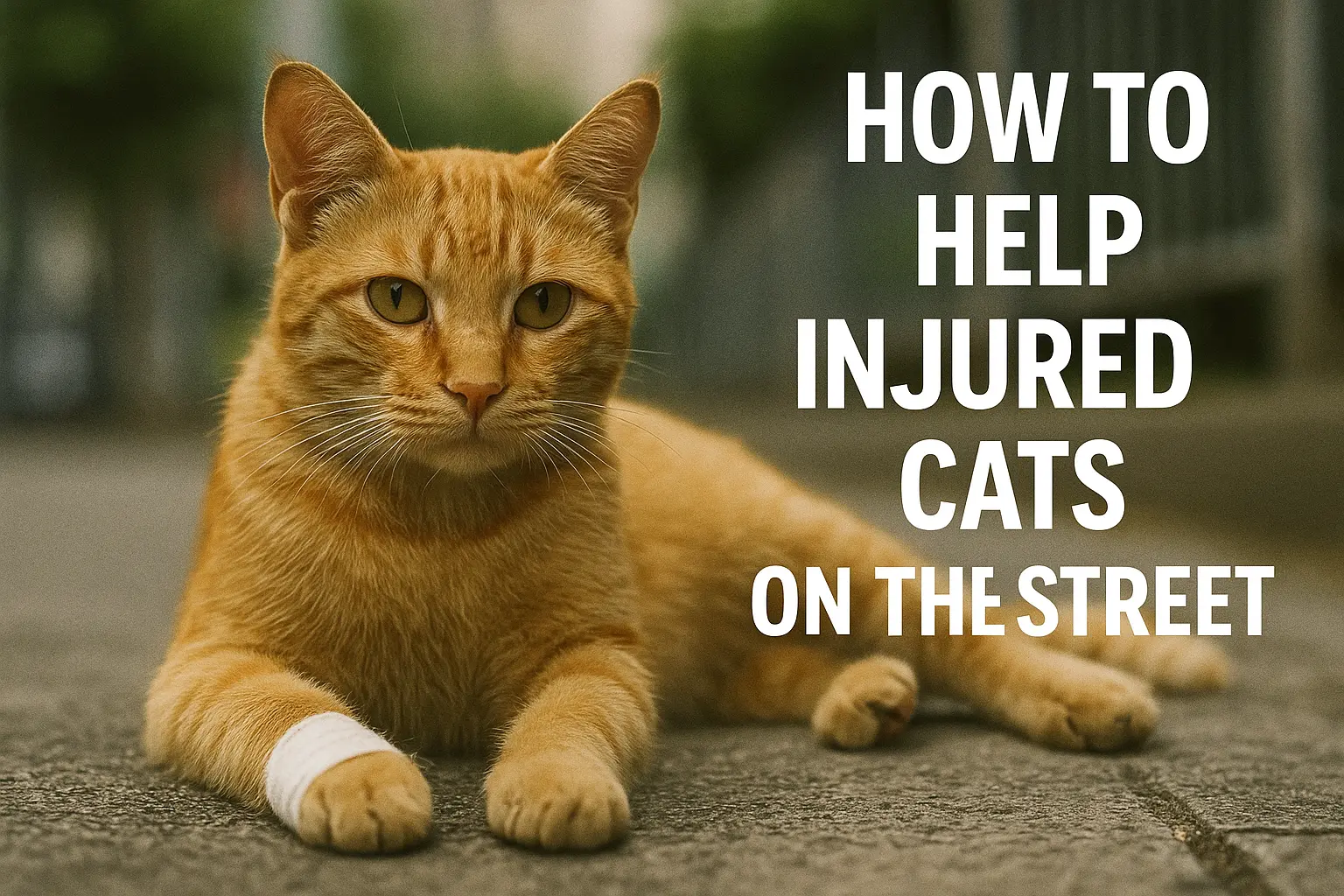Finding an injured cat on the street can be an overwhelming experience, but it’s important to stay calm and act with compassion. Here’s how you can help an injured cat:
- Assess the Situation Carefully
Before approaching the cat, assess the situation from a distance. Look for signs of distress or obvious injuries like broken limbs, bleeding, or inability to move. Ensure that the cat is not in immediate danger from traffic or predators. - Approach with Caution
Cats in pain may become frightened and aggressive. Approach slowly and speak gently to reassure the cat, keeping your body low to avoid startling it. Always wear gloves or use a towel to avoid getting scratched or bitten. - Contact a Veterinarian or Animal Shelter
If the cat is severely injured or unconscious, immediately call a local veterinarian or animal shelter. Many shelters offer emergency services for stray animals, and they can provide the necessary treatment or direct you to the right place. - Transport the Cat Safely
If you need to transport the cat, use a box, carrier, or any enclosed space that ensures it stays safe during the journey. Place soft padding or a towel inside to minimize discomfort. If the cat is small and manageable, you may gently place it in your lap. - Stop Bleeding and Keep the Cat Warm
If the cat has visible bleeding, try to stop it by applying gentle pressure with a clean cloth. Keep the cat warm by covering it with a blanket, especially if it’s cold outside. This can help stabilize the cat until professional help arrives. - Provide Water and Food (If Appropriate)
If the cat is conscious and not showing signs of distress from food or water, offer a small amount of fresh water. Avoid feeding it solid food if the cat has severe injuries, as it may complicate medical treatment. - Monitor for Shock
Injured cats may go into shock. Keep the cat calm and still, and avoid unnecessary handling. Signs of shock include rapid breathing, weakness, and pale gums. Immediate veterinary care is crucial in such cases. - Provide Long-Term Care
After the cat receives veterinary treatment, consider offering temporary shelter or help with the adoption process if it’s a stray. Support shelters, foster programs, and adoption services to ensure the cat’s long-term recovery and well-being.
Your compassion can make a significant difference in the life of an injured street cat. By following these steps and seeking professional help, you can give a vulnerable animal a chance at healing and a better life.
Estimated Reading Time: 4 minutes
Source: ASPCA, The Humane Society of the United States





